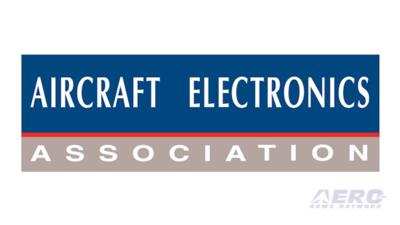Thu, Aug 10, 2017
ADS-B Out Installations Must Support Pilot-Entered Data
The FAA recently published a Legal Interpretation regarding Flight ID that essentially requires the aircraft Flight ID (either aircraft call sign or aircraft registration number) to be accurate to the aircraft's flight plan. Therefore, if the aircraft operates or is likely to operate with a dynamic call sign, the ADS-B Out installation must be able to support pilot-entered Flight ID in order to be rule compliant.

This is not to say that approved equipment is deficient. The Minimum Operational Performance Standards (MOPS) for the equipment allows for either information to be programmed into their equipment. It is a sales issue, in that "one-size ADS-B Out doesn't fit all flight missions."
According to the Aug. 3, 2017, Legal Interpretation, citing 14 C.F.R. 91.227(d)(8), the FAA states: "It is clear from the NPRM and final rule preambles that § 91.227(d)(8) is meant to ensure that ATC is able to correlate flight plan information with information presented on the radar display. Therefore, to satisfy § 91.227(d)(8), a pilot would have to provide the same call sign on his or her flight plan as he or she transmits out using ADS-B."
14 C.F.R. 91.227(d)(8) states, in part:
§ 91.227 Automatic Dependent Surveillance-Broadcast (ADS-B) Out equipment performance requirements.
(d) Minimum Broadcast Message Element Set for ADS-B Out. Each aircraft must broadcast the following information, as defined in TSO-C166b or TSO-C154c. The pilot must enter information for message elements listed in paragraphs (d)(7) through (d)(10) of this section during the appropriate phase of flight.
(8) An indication of the aircraft's call sign that is submitted on the flight plan, or the aircraft's registration number, except when the pilot has not filed a flight plan, has not requested ATC services, and is using a TSO-C154c self-assigned temporary 24-bit address.
The Aircraft Electronics Association (AEA) notes that this places an additional knowledge burden on the installing agency to ensure that the customers are purchasing mission-appropriate equipment. Should the customer routinely fly with a dynamic call sign such as EMS, flight schools or volunteer organizations, they will need the ability for the pilot to change their ADS-B Out Flight ID to align with their flight plan call sign.
The AEA said in a statement that it is disappointed that this topic is just now coming to light, seven and a half years from the date the rule was published. In addition, the agency will need to find a remedy for any ADS-B Out system that may not support a dynamic Flight ID that was installed prior to this interpretation (Aug. 3, 2017).
(Source: AEA)
More News
Secondary Radar/Radar Beacon (ATCRBS) A radar system in which the object to be detected is fitted with cooperative equipment in the form of a radio receiver/transmitter (transponde>[...]
Aero Linx: Australian Society of Air Safety Investigators (ASASI) The Australian Society of Air Safety Investigators (ASASI) was formed in 1978 after an inaugural meeting held in M>[...]
Make Sure You NEVER Miss A New Story From Aero-News Network Do you ever feel like you never see posts from a certain person or page on Facebook or Instagram? Here’s how you c>[...]
From 2023 (YouTube Edition): Barking up the Right Tree Australian-born, the Aeropup is a remarkably robust, fully-customizable, go-anywhere, two-seat, STOL/LSA aircraft. The machin>[...]
Also: New Amelia Search, B737 Flap Falls Off, SUN ‘n FUN Unveiling, F-16 Record Captain Sully Sullenberger, the pilot who saved 155 people by safely landing an A320 in the Hu>[...]
 ANN's Daily Aero-Term (07.12.25): Secondary Radar/Radar Beacon (ATCRBS)
ANN's Daily Aero-Term (07.12.25): Secondary Radar/Radar Beacon (ATCRBS) ANN's Daily Aero-Linx (07.12.25)
ANN's Daily Aero-Linx (07.12.25) ANN FAQ: Turn On Post Notifications
ANN FAQ: Turn On Post Notifications Classic Aero-TV: Of the Aeropup and its Pedigree
Classic Aero-TV: Of the Aeropup and its Pedigree Airborne 07.07.25: Sully v Bedford, RAF Vandalism, Discovery Moving?
Airborne 07.07.25: Sully v Bedford, RAF Vandalism, Discovery Moving?



